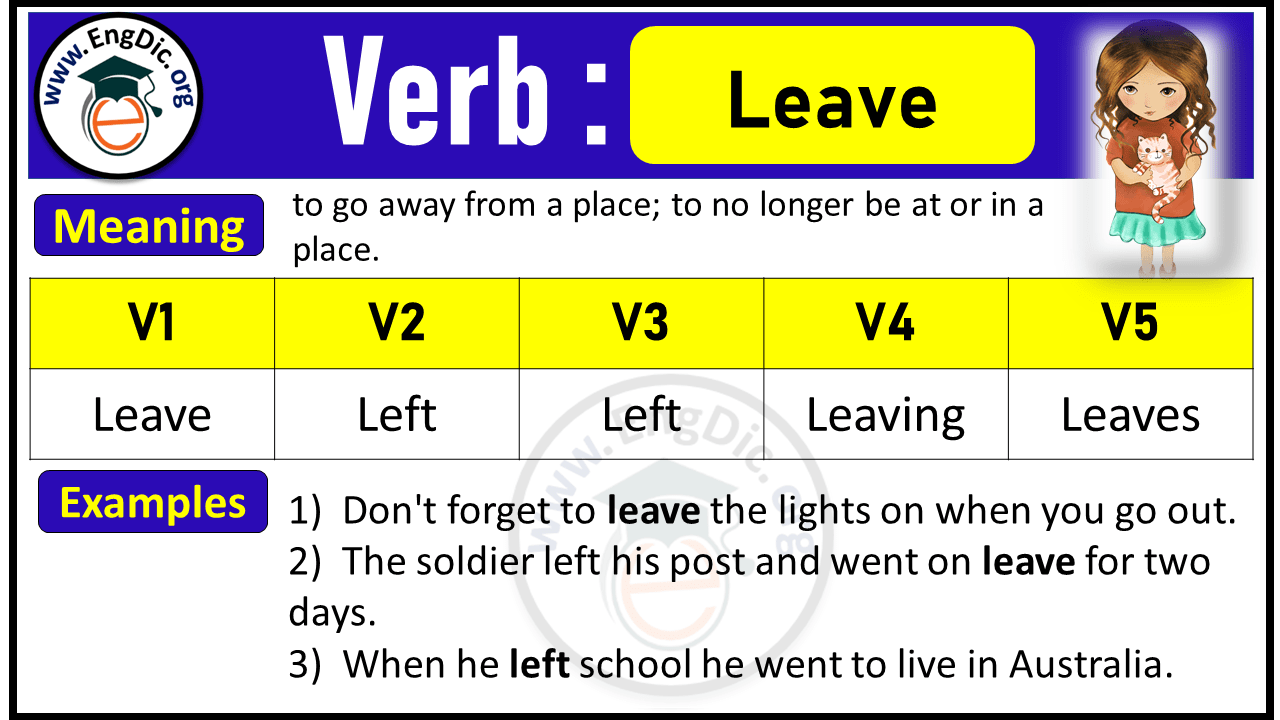
v1 v2 v3 forms of Leave Archives EngDic
leaf. Third-person singular leafs. Past tense leafed. Past participle leafed. Present participle leafing. To look through quickly, browse. She leafed through the book. To make leaves. The trees leafed in early spring. Synonyms [change] (look through) browse, search, skim;

Past Tense Definition, Rules and Examples of Past Tenses • 7ESL Simple past tense, Past tense
Noun[change] Singular leaf. Plural leaves. The plural form of leaf. The leaves fall in autumn. Verb[change] Plain form leave. Third-person singular leaves. Past tense left.

Past Tense of Leaf Leafed or Leaf? (Pronunciation & Usage)
What is the past tense of Leaf? The past tense forms of the verb "leaf" are: 1. I leafed; 2. You leafed; 3. He/she/it leafed; 4. We leafed; 5. You leafed; 6. They leafed; Language: English - United States Change Nearby words. leads to expect; leads to the altar; leads up garden path; leads up to.

Narrative Tenses Learn All 4 Past Tenses and How to Use them
The past tense of "leap" is "leaped" or "leapt.". In American English, "leaped" is more common, while "leapt" is often used in British English. Both of them are considered acceptable and correct forms. You can check out the below table to learn more about other verb forms of leap: Base Form/Infinitive Form (V1) leap.
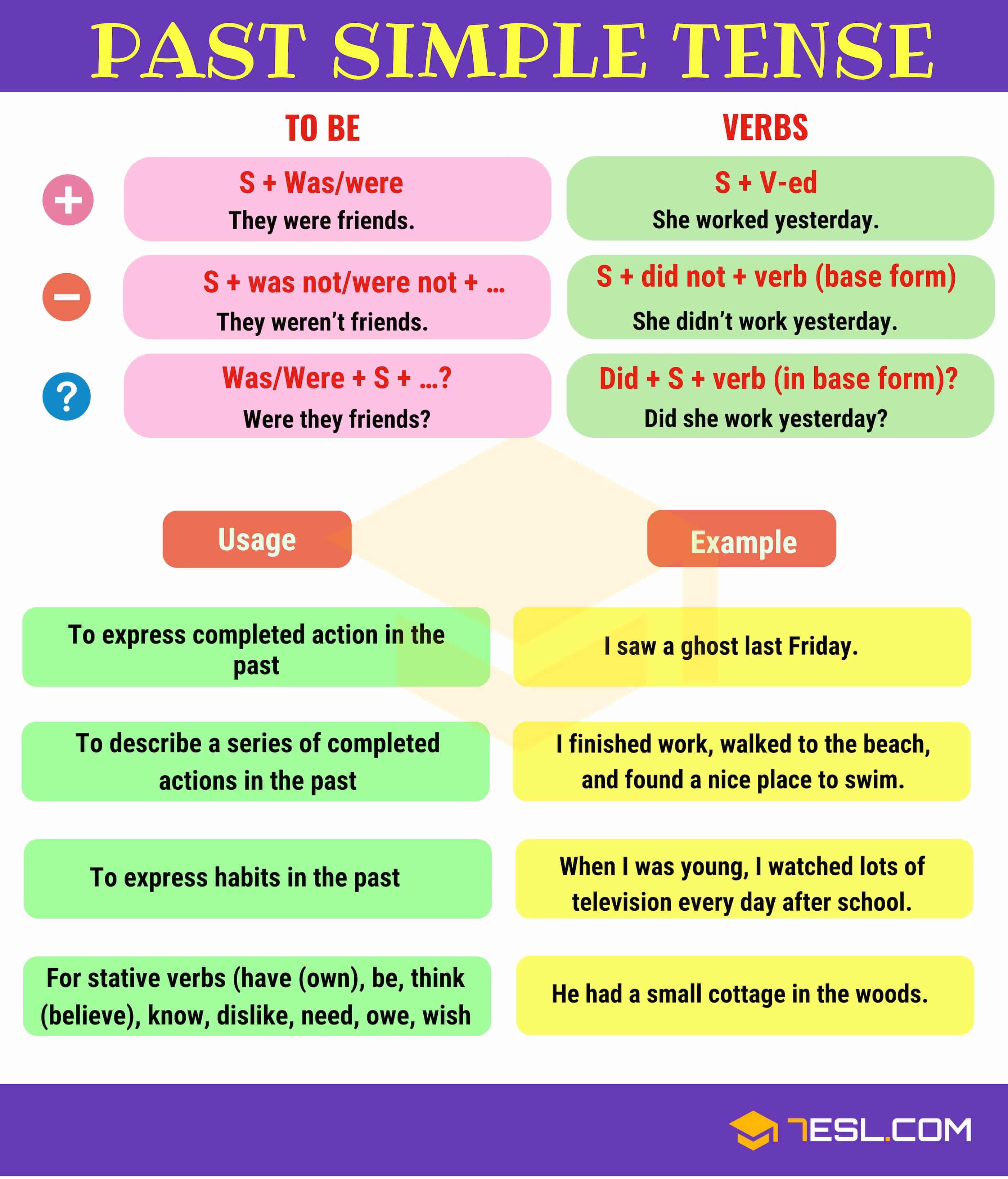
Verb Tenses How to Use The 12 English Tenses with Useful Tenses Chart • 7ESL
English Dictionary Thesaurus Sentences Conjugation Grammar Definition of 'leaf' Word Frequency leaf (liːf ) Word forms: plural leaves , 3rd person singular present tense leafs , present participle leafing , past tense, past participle leafed 1. countable noun [usually plural, oft in/into N]

Leave Past Tense, Present and Future Conjugations, Leave V1 V2 V3 in 2022 Past tense, Simple
Find the simple past tense and past particle of the verb leaf. Also see how to use the verb leaf in the past tense with some examples.

Past Tense Of Leave, Past Participle Form of Leave, Leave Left Left V1 V2 V3 Past Tense o
The past tense of "leave" is "left.". It is an irregular verb, so it doesn't the standard rule adding -ed to the base form to form for forming the past tense of regular verbs. Here are some examples of past tense of leave: Present tense: I leave my house at 7 am. Past tense: Yesterday, I left my house at 7 am.

See past tense past tense of see Past tense, Simple present tense, Tenses
What is The Past Tense of Leaf? | Grammar Wiki Grammar Wiki 8 subscribers Subscribe 0 Share 31 views 10 months ago PAST TENSES Learn more: https://grammarwiki.com/past-tense-of. The past.
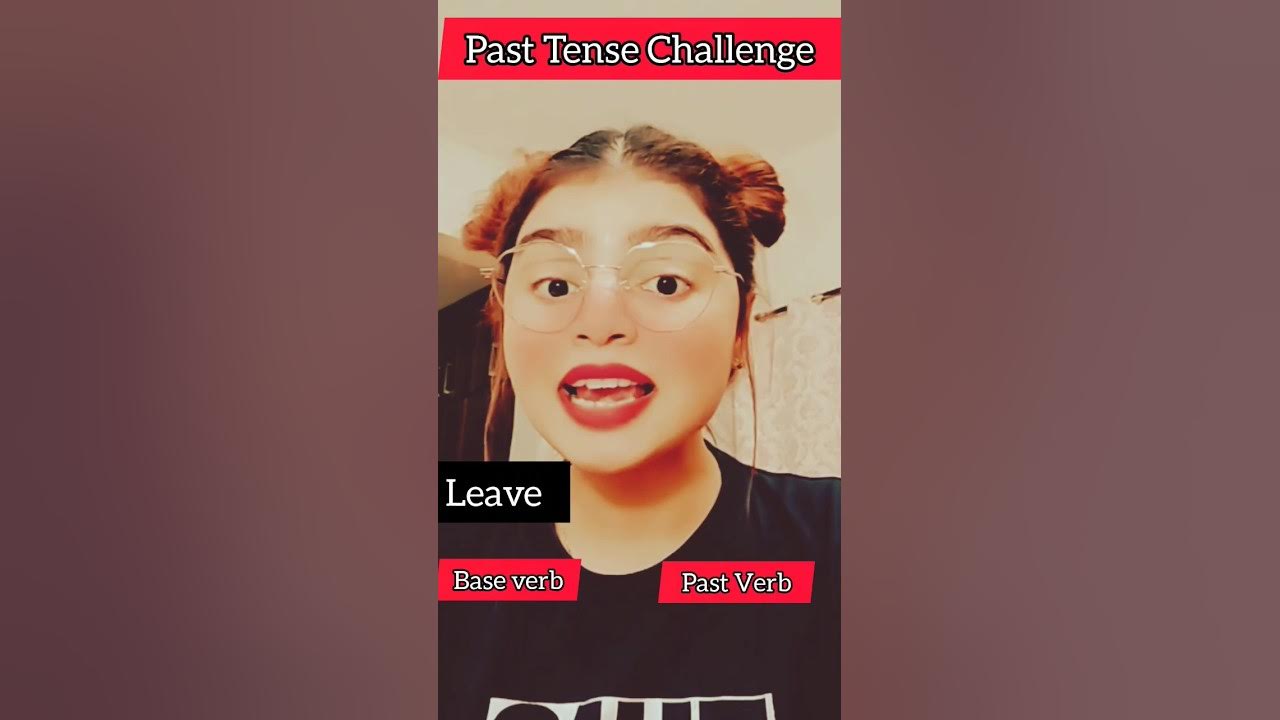
Past Tense of "Leave " english shorts learnenglish vocabulary pronunciation grammar
regular model: work verbs ending in -e: like work- model verb Variants of the regular models: pass-s, -sh, -x, -o: +e try-y>ie omit-X>-XX die-ie: -ie>y agree-ee: +d Irregular past tense models: costinvar. feedvowel: long>short findi>ou know[o,a]>e mean+t panic-k- pay-ay>aid send-d>-t singi>a, u show>ed, -n sticka>u, i>u sleep-ee_>-e_t
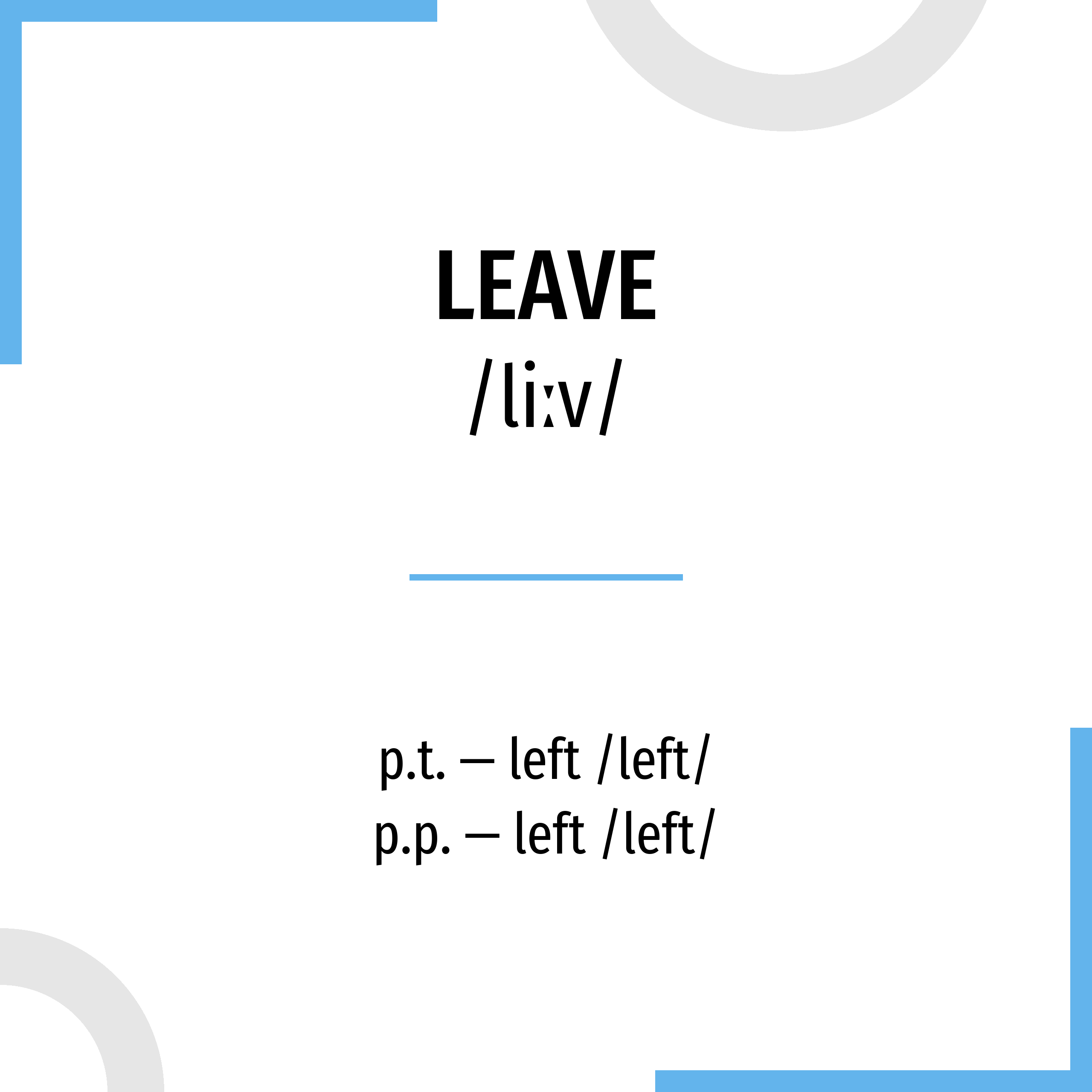
три формы глагола leave в английском языке
Irregular verbs are verbs that do not follow the normal patterns for tense and past participle. While most English regular verbs use the ending "-ed" for the past tense and participle forms, irregular verbs each have their own unique tense forms and past participles. Irregular verbs are one of the hardest parts of the modern English.
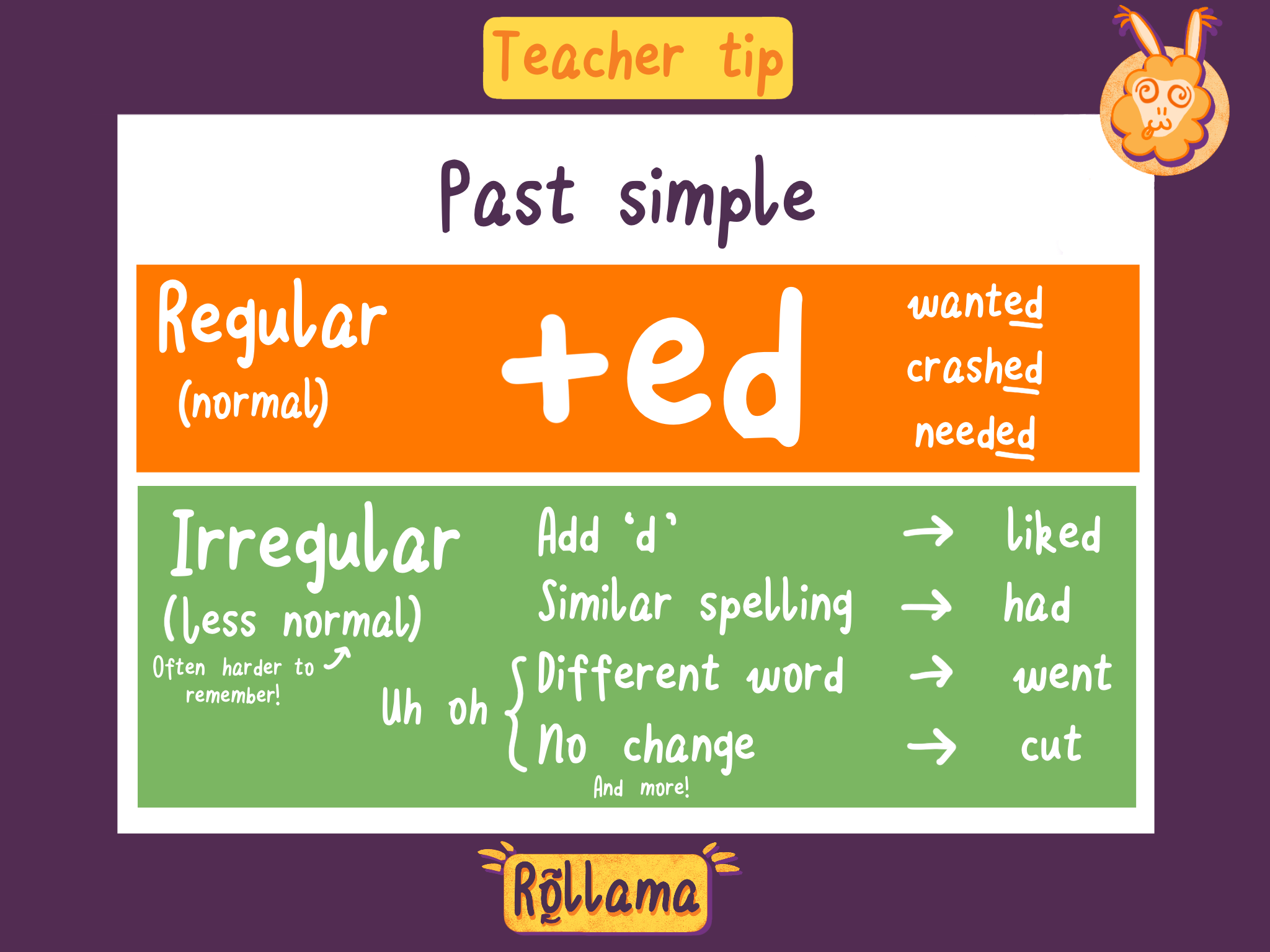
Bug Fix Verb Tenses
past tense of leaf is leafed. Leaf verb forms Conjugation of Leaf Simple / Indefinite Present Tense He/She/It leafs . I leaf. You/We/They leaf. Present Continuous Tense He/She/It is leafing. I am leafing. You/We/They are leafing. Present Perfect Tense He/She/It has leafed. I have leafed. You/We/They have leafed. Present Perfect Continuous Tense

Past Tense Verbs Thumbprint Leaves FREEBIE (Regular & Irregular Past Tense) Regular past tense
Word forms: leaves plural, leafs 3rd person singular present tense, leafing present participle, leafed past tense past participle. 1. countable noun [usu pl, also in/into N] The leaves of a tree or plant are the parts that are flat, thin, and usually green. Many trees and plants lose their leaves in the winter and grow new leaves in the spring.

Noun tree with verb leaves. To make a strong sentence grow, the nouns and verbs need to be stro
There are two tenses in English - past and present. The past tense in English is used: to talk about the past. to talk about hypotheses (when we imagine something) for politeness. There are four past tense forms in English: Past simple: I worked. Past continuous:

Leave Past Tense Verb Forms, Conjugate LEAVE
The only plural of leaf is leaves, when referring to the noun. Leaf can also be a verb meaning, "to turn through pages, sheets", often paired with "through"; e.g., " to leaf through " a book. The plural of the noun leaf is sometimes mistaken for leafs; which, understandably, is likely due to the fact that most English plural nouns.
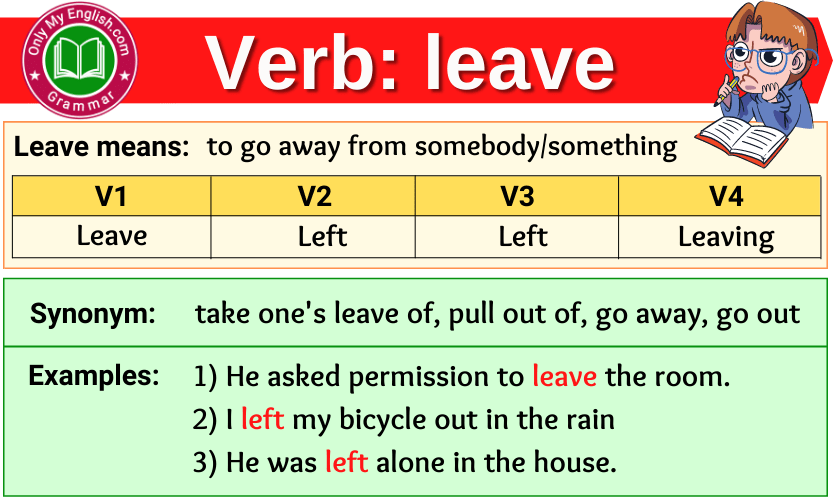
Leave Verb Forms Past Tense, Past Participle & V1V2V3
Past participle leafed Model : obey Auxiliary : have, be Other forms: leaf oneself / not leaf Contractions Advertising Indicative Present I leaf you leaf he/she/it leafs we leaf you leaf they leaf Preterite I leafed you leafed he/she/it leafed we leafed you leafed they leafed Present continuous I am leafing you are leafing he/she/it is leafing

Awasome Simple Past Tense Leave Adalah Ideas Id.Beritasik
Leaf in Past Perfect Tense. Singular. Plural. I had leafed. We had leafed. You had leafed. You had leafed. He/She/It had leafed. They had leafed.